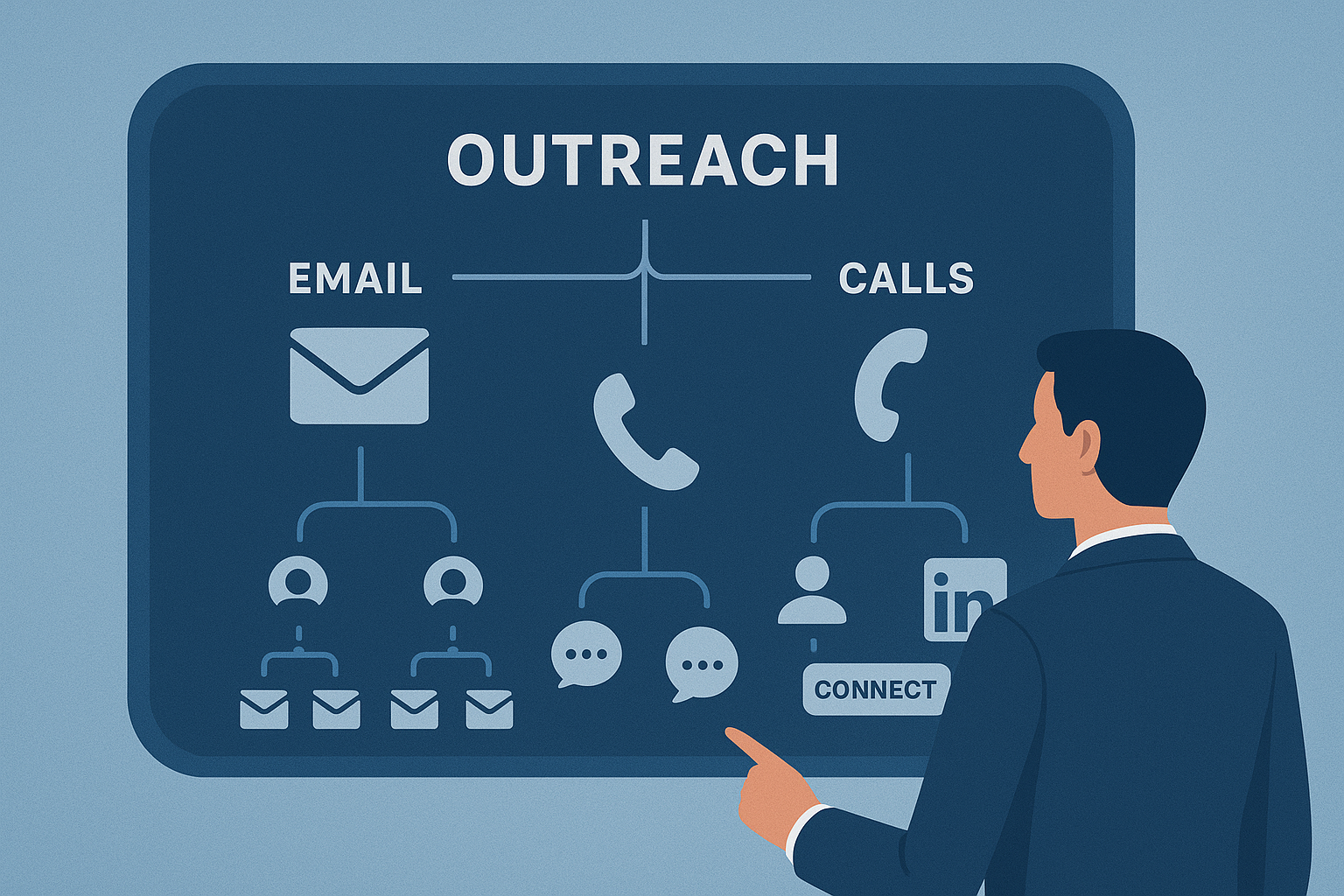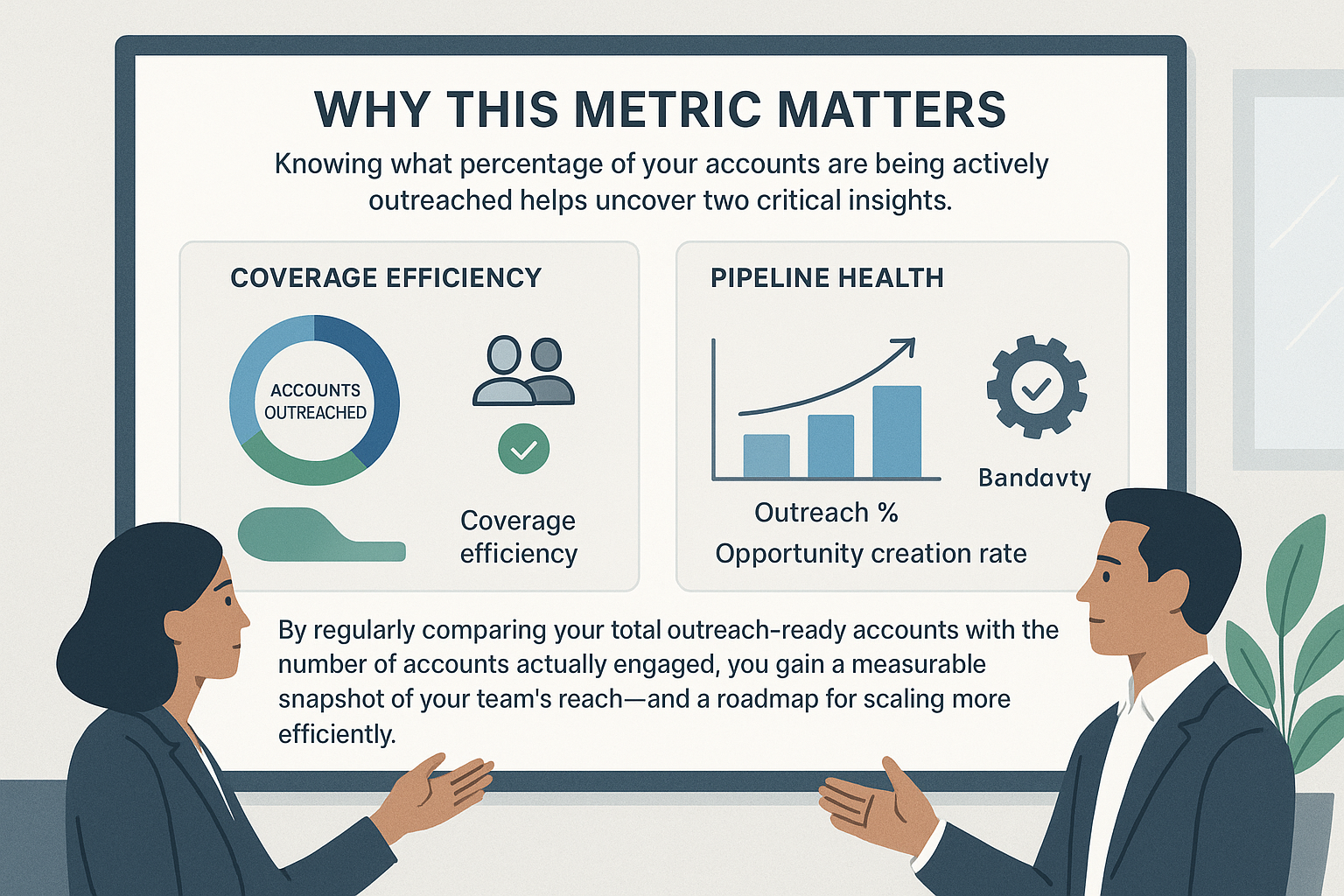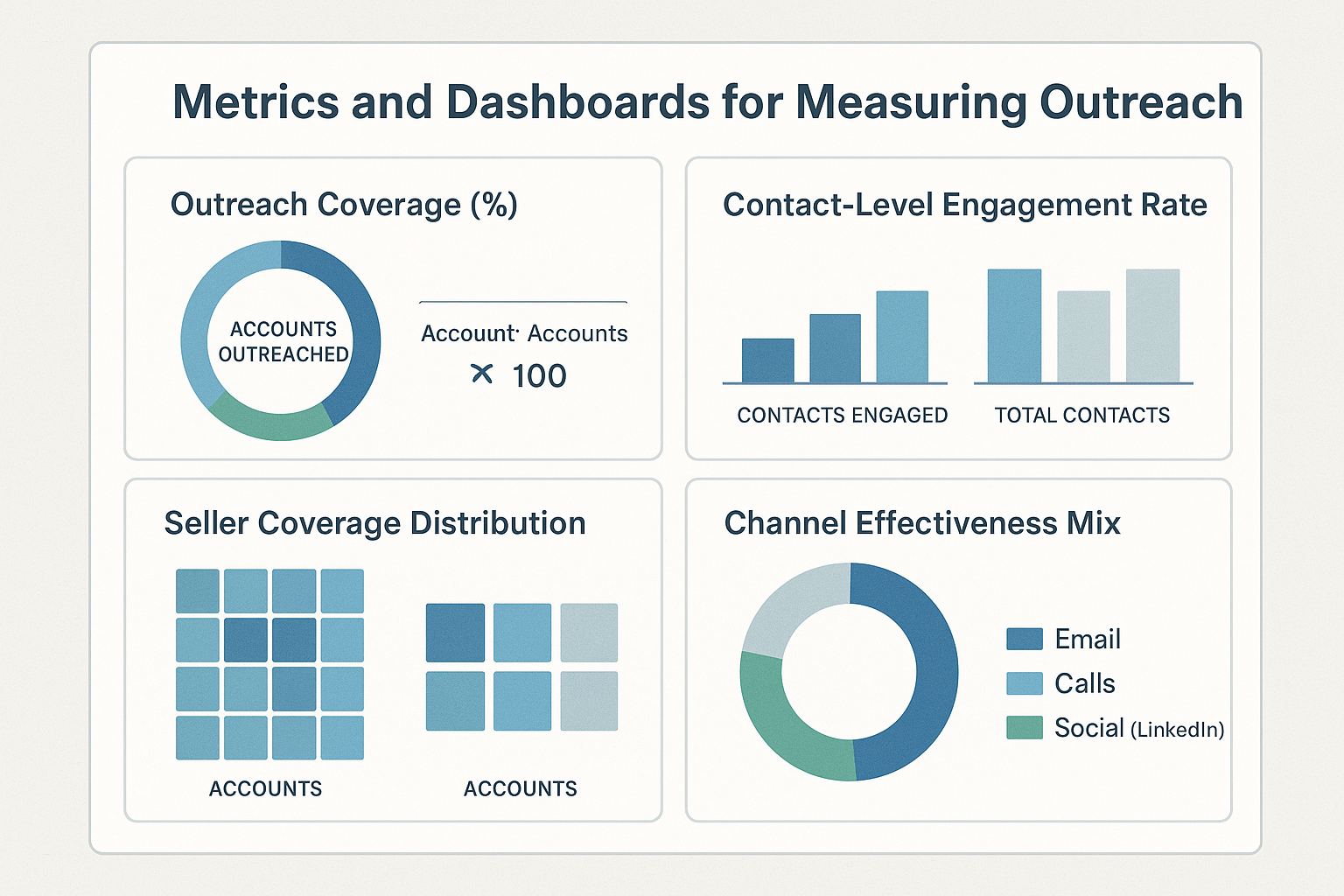How Actively Are You Outreaching Within Your TAM, SAM, SOM?
One of the most important questions in modern B2B go-to-market strategy is: What percentage of your total addressable market (TAM), serviceable available market (SAM), or serviceable obtainable market (SOM) are you actively engaging with? Is it 20% of your accounts, 50%, or even 80%? Understanding this coverage requires clarity on two key variables.
Defining Your Total Addressable Outreach Base
The first step is determining how many accounts in your database are actually valid for outreach during your period of interest—whether that’s a month, a quarter, or the entire fiscal year.
Start with your full list of accounts but exclude those where you don’t have the necessary contact data. Many organizations adopt a strict rule here: an account qualifies only if it has at least two relevant decision-makers or contacts to engage with.
Accounts that fall short of this threshold can be moved into a “suspense list”—a category the research team can gradually enrich over time.


Ensuring the Quality of Contact Data
Not all contacts are created equal. To classify a contact with relevant title, you’ll typically need at least one—or ideally all—of the following data points:
- Valid email address:
Enables direct messaging through outbound campaigns. - Valid phone number:
Could be a direct line, mobile, or switchboard for call-based outreach. - Valid LinkedIn profile URL:
Useful for sending connection requests, InMails, or personalized outreach through social channels.
Tracking Outreach Across Channels
Your sales and marketing teams likely use a multi-channel approach for one on one engagement, including:
- Email outreach from multiple domains or personalized inboxes.
- Direct calls to verified numbers for relationship building or qualification.
- Social media engagement, such as LinkedIn connections or InMails to spark initial conversations.


From Data to Visibility
Once your outreach-ready account and contact list is defined, each seller typically conducts their own research to:
- Identify the right set of contacts to approach within an account.
- Review previous outreach efforts or existing connections.
- Gather account insights and craft a personalized point of view for the account.
This personalization process is one of the most time-intensive tasks from a sales perspective. Sellers must synthesize raw data, verify contact relevance, align messaging, and ensure they’re not duplicating previous efforts—all while striving to engage contacts.
Why This Metric Matters
Knowing what percentage of your accounts are being actively outreached helps uncover two critical insights:
- Coverage efficiency – Are your teams spending their time across accounts or just focused on a few accounts?
- Social media engagement, such as LinkedIn connections or InMails to spark initial conversations.
By regularly comparing your total outreach-ready accounts with the number of accounts actually engaged, you gain a measurable snapshot of your team’s reach—and a roadmap for scaling more efficiently.


Metrics and Dashboards for Measuring Outreach
To make this process actionable, you can track a few key metrics within your CRM or sales engagement platform:
- Outreach Coverage (%):
Outreach Coverage=Number of Accounts Outreached/Total Outreach-Ready Accounts×100
- This tells you what fraction of your potential market has had at least one meaningful touchpoint during a given time frame.
- Contact-Level Engagement Rate:The percentage of individual contacts within accounts who received outreach attempts (email, call, or social).
- Seller Coverage Distribution:
Shows how evenly your team’s outreach efforts are spread across accounts—useful to find under-touched accounts. - Channel Effectiveness Mix:Breaks down how many engagements came from email, calls, or social outreach via LinkedIn, helping refine channel strategy.
Dashboards combining these metrics can offer instant visibility into where your outreach program stands today—allowing leaders to set clear goals, balance workloads across teams, and identify market segments that are under-engaged or overlooked.

.png)